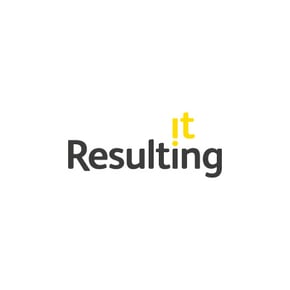I spent 19 years as an IT Analyst working for Gartner in their ERP Business Applications team and I was 100% focused on SAP. That involved 400+ client telephone inquiries each year, where I felt just like your GP - trying hard to diagnose what had gone wrong with their SAP projects. “Try reading these research notes and if that doesn’t work I recommend a follow up call with another Gartner research specialist”. Actually, it became really exciting when it was crystal clear that some clients in inquiry calls had already solved exactly the same problem. How did they do that? What were their secrets? Over time I learned how to spot SAP “Best Practices” and underlying trends.
Looking back at those many client inquiries I think that about 10% of clients were what I would call leaders, the rest were followers, who really needed advice on how to fix their problems.
At Resulting we specialise in what we call business-side consulting, which means helping an SAP client to do what they should be doing in complex SAP projects. If they have not done such projects before, how would they know how best to work with an SI and/or SAP? At Resulting we have gradually built up our own set of SAP Best Practices for doing exactly this.
In highly turbulent business conditions and an increasingly digital world it is becoming harder to ensure long term success with large investments in the highly integrated world of SAP and ERP in general.
The purpose of this article is to suggest some Best Practices for the key stakeholders in SAP customers that will help them steer their SAP programmes over the long term towards lasting success and business value.
The SAP ERP Life Cycle
Let’s get one thing clear straight away – there’s no such thing as an “ERP project”. Why’s that I hear you ask? Because all projects have a start date and an end date. With ERP we are typically looking at a 20 to 30 year+ investment, where the first project go-live celebrations are just getting your feet under the table! ERP business processes form what Gartner calls a crucial System of Record (SOR), using its Pace layer model. So, ERP is truly long-lasting.
So what? Well ERP SOR business processes are also highly integrated, real-time and compute the business top-line and bottom-line performance. We do need to be realistic and recognise the real importance of ERP to the business over at least a 20 year lifecycle. We need to understand all of the key parts of the ERP lifecycle and what their realistic budgets need to be – including the dreaded ERP upgrade projects, which are inevitable. The following diagrams, Figures 1 and 2, identify all of the key elements of the ERP lifecycle and its Exploit phase.
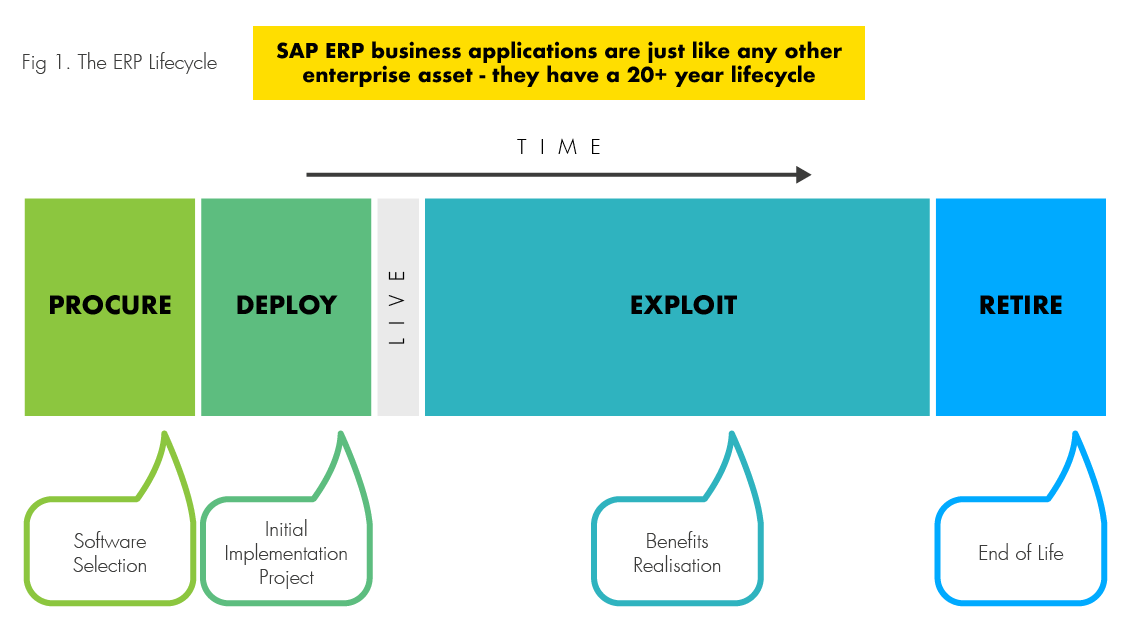
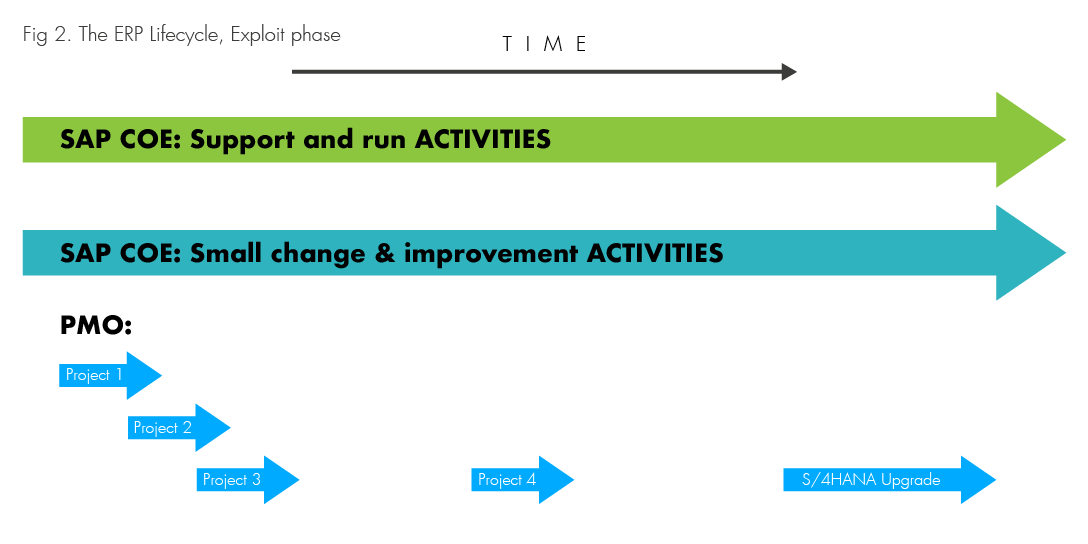
The clear implication of all of this is that ERP is not a single project, it is realistically an important business asset, with its own ERP lifecycle. ERP needs feeding and watering over the 20 year lifecycle.
The SAP CoE
In my research at Gartner I quickly spotted that one thing all of the leading SAP customers had at least one thing in common: a business-driven SAP Centre of Excellence (SAP CoE), which is shown schematically in Figure 3. This is quite simply to build SAP self-sufficiency as soon as possible within an SAP customer after the first go-live. This reduces ERP lifecycle costs and maximises the business value from the ERP basic business processes.
I discovered this in my research way back in 1999 (so last-century!) yet this simple model has endured the test of time. It’s a no-brainer if you want to keep control of your SAP investment. A diagram which captures the key elements of a business-driven SAP COE is shown in Figure 3.
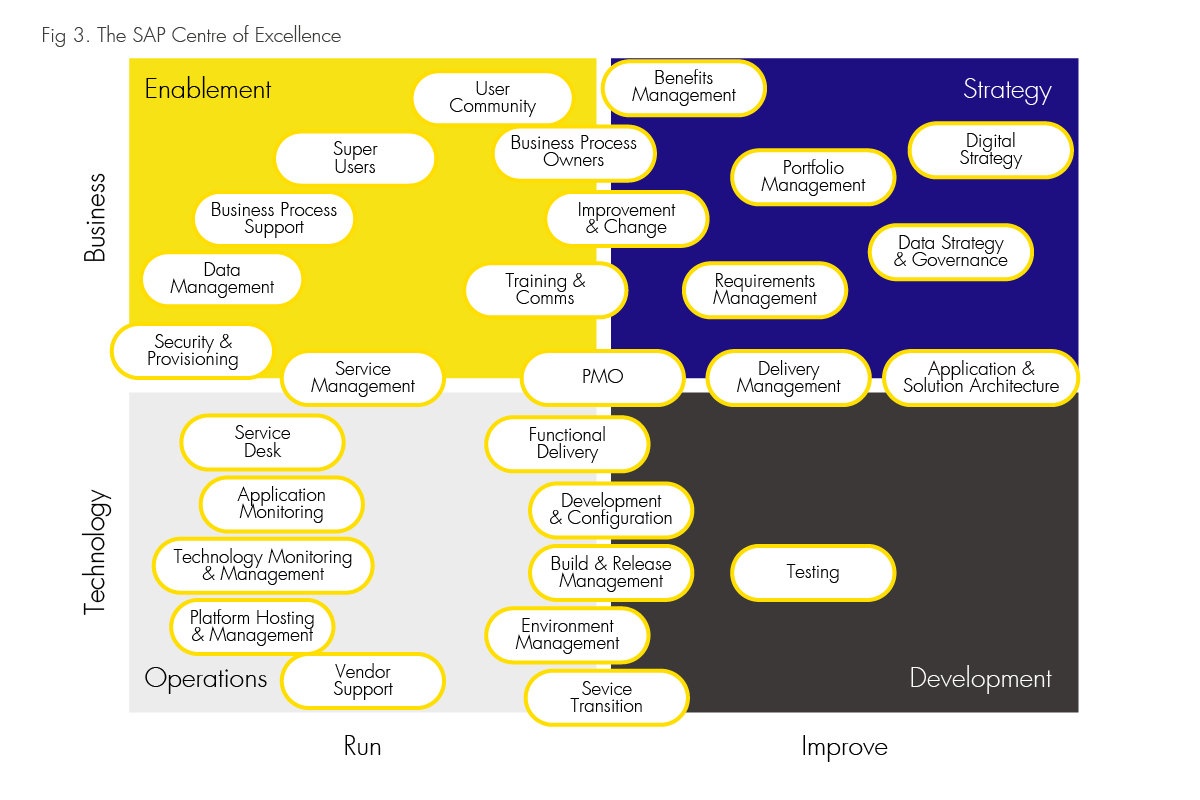
References to Resulting SAP COE articles:
But where are your “SAP Goalposts”?
Now let’s just take one step back for a moment. We have already underlined the importance to the business of ERP, plus it’s long-term nature. So, we are typically talking about large investments for both the first ERP project and the inevitable ERP lifecycle. So how do the leaders recognise this and manage it?
Well, they always have a formal ERP Strategy, which takes the form of a structured document, owned and signed off at the business executive level. The ERP Strategy is driven directly by the Business Strategy. The ERP Strategy includes these key elements:
- List of ERP business processes in scope
- Mapping of ERP business processes to all business unit segments
- Governance model for ERP business processes
- Business value of all ERP business processes and how it is measured
- High level ERP SOR architecture
- ERP package customisation strategy
So, the ERP Strategy fundamentally acts as your set of ERP goalposts.
At Resulting we have constantly been amazed at how few of our clients have either an ERP Strategy, or even a fully up-to-date detailed definition of their ERP business processes.
References to Resulting articles:
SAP Success – On Value
One of the landmark pieces of research that Resulting has conducted is the SAP Success Report. Well, we got tired of hearing about how difficult SAP projects were and decided we needed to dig deeper. Some very basic research revealed that most SAP customers think they are successful if their complex ERP projects are delivered On Time and On Budget. Fair enough, it is very challenging, for a long list of reasons.
Worse than that we found that only 48% of customers in our survey believed that their successful live SAP systems delivered what the CEO had expected – which was fundamentally to be On Value. This means delivering the business benefits that were targeted right up front in the ERP lifecycle within the ERP Business Case. The ERP Business Case is a direct consequence of a clear ERP Strategy.
The ERP Business Case can be based either in financial terms (payback period, ROI, NPV, etc) or purely on strategic enablement (business transformation, new business model enablement, etc).
Our SAP Success Report identified the most critical Success Levers determining On Value success are:
- High adoption focus
- Solution standardisation
- Confident sponsorship
Shortly after any SAP Project in the ERP lifecycle goes live and has “bedded in“, the three SAP Success criteria of On Time, On Budget and On Value should be carefully reviewed as shown in Figure 4.
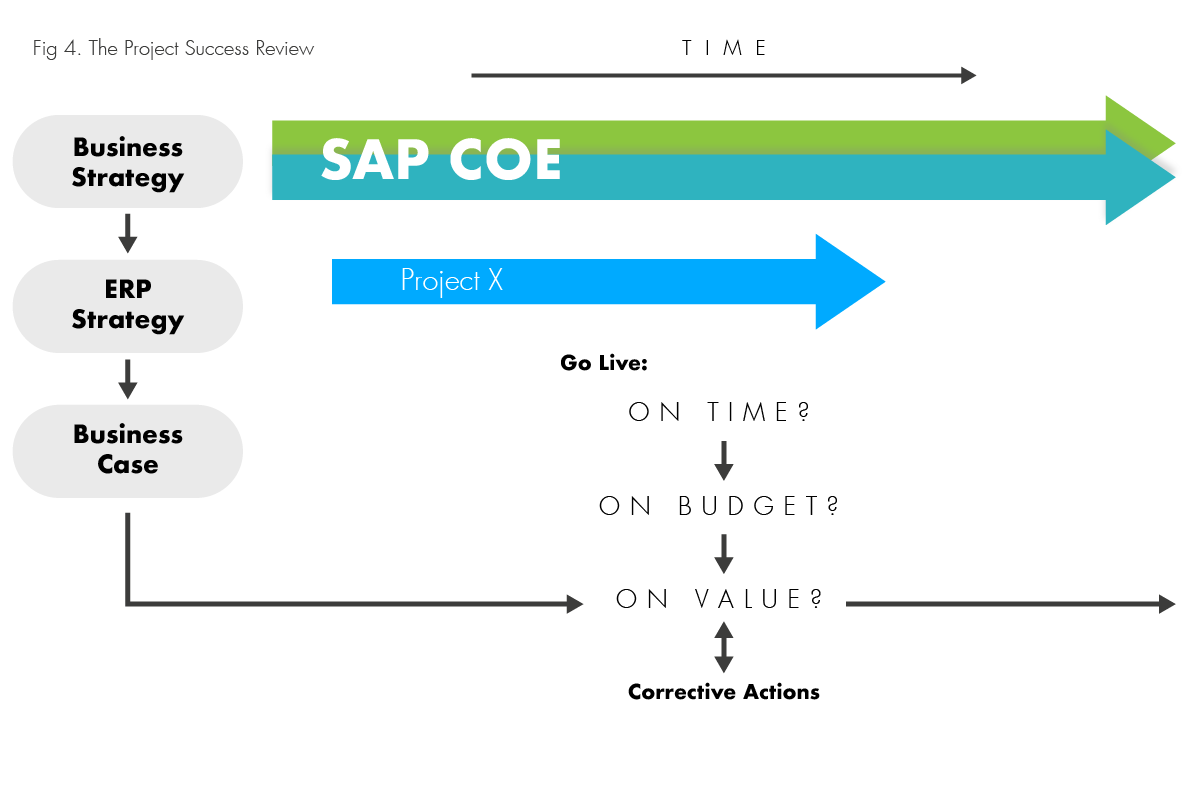
Typical personas involved in this Project Success Review include:
- Project manager
- SAP CoE manager
- Super users
- Business process owners or business benefit owners
If the Key Performance Indicators from the original Business Case which characterise On Value achievement are off-track then it may be necessary to identify some corrective actions.
References to Resulting articles:
Your SAP Stakeholders
Effective Project Success Reviews are vital to achieving SAP Success in the short term, but to ensure long term SAP Success throughout the whole ERP lifecycle additional measures are fundamentally needed.
Given the sheer expense and longevity of an ERP investment, leading SAP customers are careful to identify SAP Stakeholders who are typically business executives that own and drive SAP Success long term. These leading SAP customers typically conduct an end of year Annual Stakeholder Review process, as shown in Figure 5.
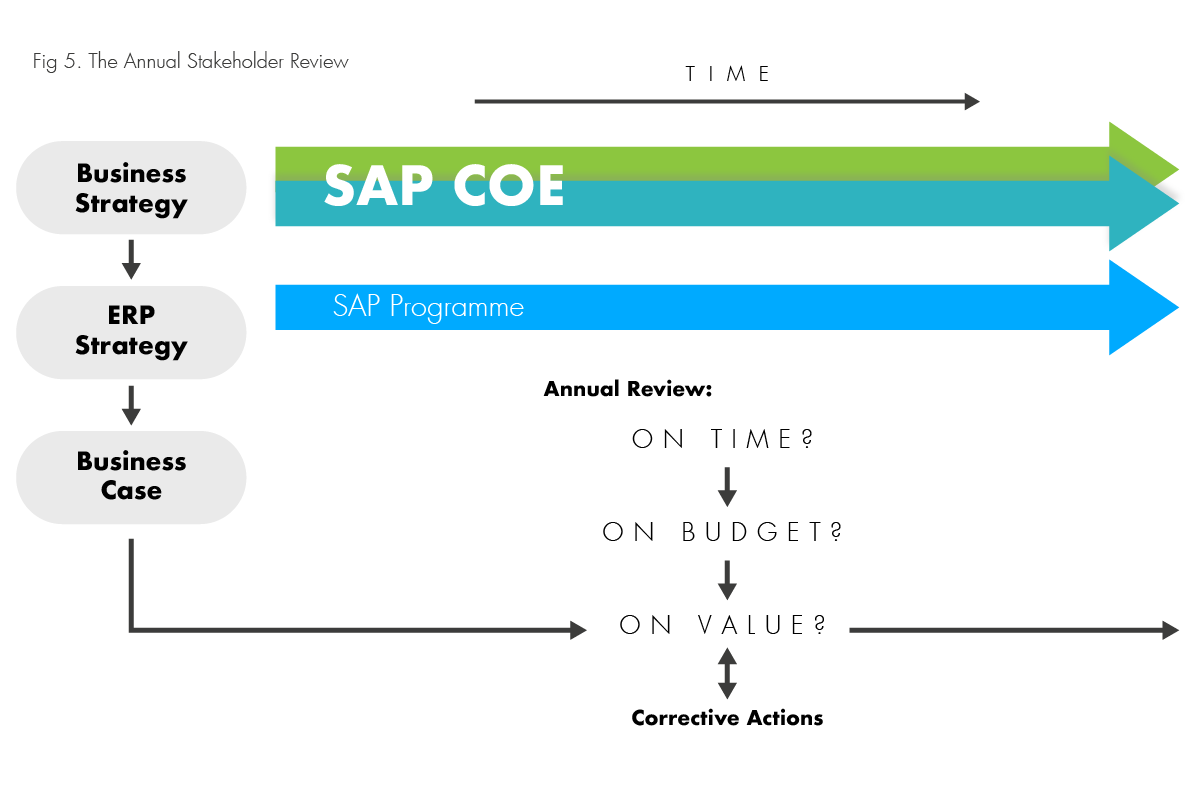
Typical personas involved in the Annual Stakeholder Review typically include:
- Business executive sponsor, on the board
- CIO
- SAP COE manager
- Business process owners or business benefit owners
This review focuses on the results from the overall, on-going, SAP Programmes (i.e. the collection of SAP projects). Special emphasis is placed in reviewing the On Value success criteria. Corrective actions could include adjusting the ERP Strategy and/or the SAP Business Case, refreshing the Super User programme, enhancing user adoption, etc.
The Annual Stakeholder Review faces two notoriously difficult challenges:
- Changes in the business model
These could be driven by industry disruption, MAD, business unit reorganisations and changes in direction - Changes in business executive sponsor
These typically occur every year or two. Incoming execs need to inherit the business commitments that their predecessors signed up to
Having reviewed previous achievements of the SAP Programme the Annual Stakeholder Review should then focus on its future. This means updating the future SAP Roadmaps within the SAP Programme. It also means adjusting budgets for projects and the SAP COE.
Finally, it is always good practice to communicate the overall success of the SAP Programme to everyone involved. There is no substitute for first class people management. This may sound obvious, but client feedback shows that it is often overlooked.
References to Resulting articles:
Dr Derek Prior spent 19 years as an analyst specialising in SAP at Gartner and AMR Research, advising organisations all around the world on SAP strategy and best practices.
Download "Fifty shades of blue: the secrets to taking control of your S/4HANA journey" for everything you need to know about S/4HANA migration.











